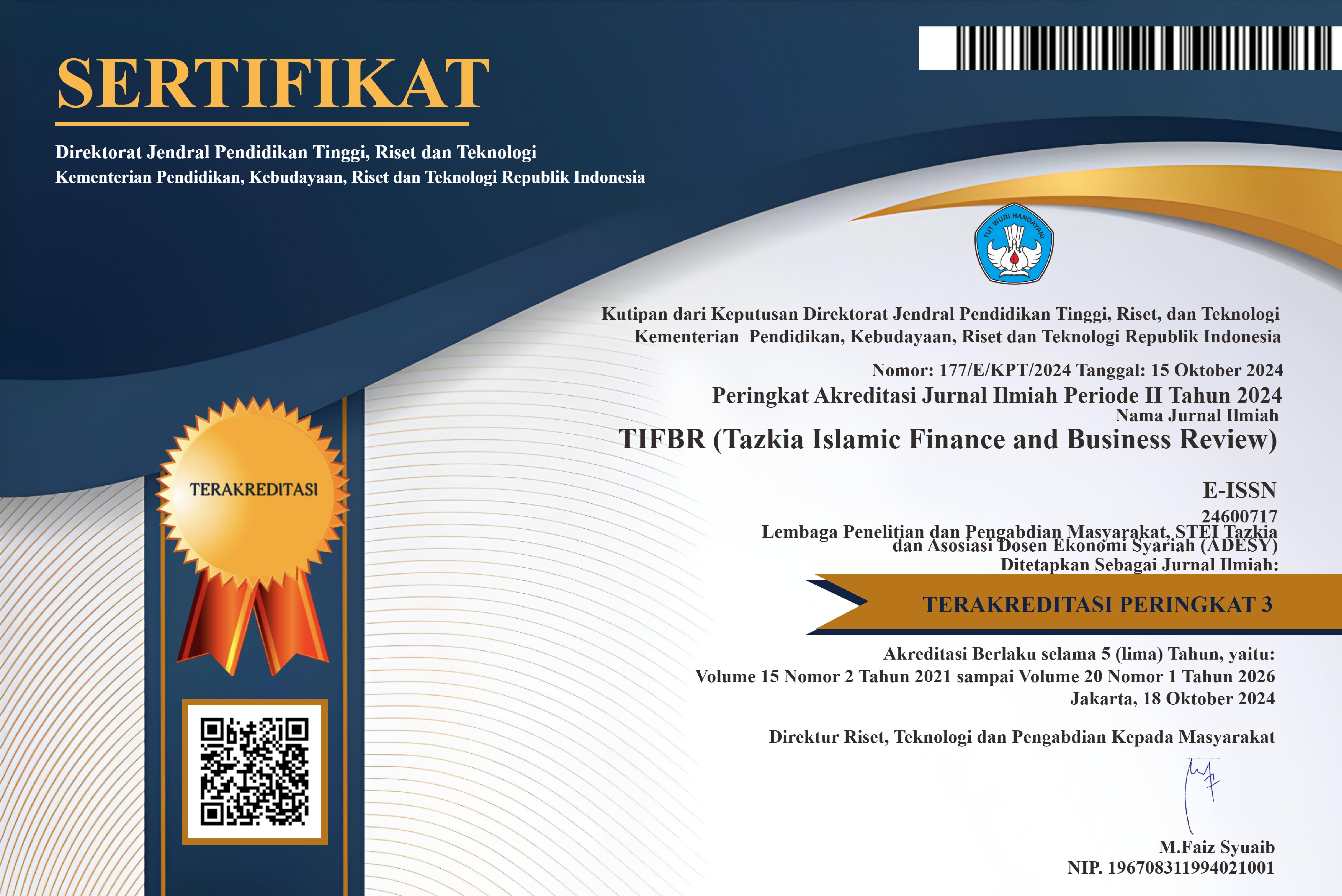Measuring the Competitiveness of Islamic Banking in Indonesian Dual Banking System
DOI:
https://doi.org/10.30993/tifbr.v3i2.23Abstract
Islamic banks in many countries have emerged as important component of financial system that contributes to the growth and development of the country’s economy. They have proven to be a viable and competitive component of the overall financial system. In the dual banking system, Islamic banks have to be competitive to survive. One of the key to competitiveness is efficiency. This study will measure and compare the efficiency of Islamic and conventional banks in Indonesia using Data Envelopment Analysis (DEA) methodology. DEA is a non-parametric, deterministic methodology for determining the relative efficiency and managerial performance, based on the empirical data on chosen inputs and outputs of a number of decision making units. DEA allows us to compare the relative efficiency of banks by determining the efficient banks as benchmarks and by measuring the inefficiencies in input combinations (slack variables) in other banks relative to the benchmark. Intermediation approach will be applied. This study will identify the sources and level of inefficiency for each of the inputs and outputs of Islamic banks and conventional banks in Indonesia. The result shows that in overall, Islamic banking is relatively more efficient than conventional banking. This means that Islamic banks are competitive enough to compete with conventional banks. Islamic banking is technically more efficient, but less scale efficient than conventional banking. Internal inefficiency is the main source of disintermediation of conventional banking in Indonesia. Furthermore, accelerated expansion, organically and inorganically, is needed to improve scale and overall efficiencies of Islamic banking in Indonesia.
Keywords: Banking, Islamic Banking, Efficiency, Data Envelopment Analysis
Downloads
Published
How to Cite
Issue
Section
License

Tazkia Islamic Finance and Business Review (TIFBR) is licensed under a Creative Commons Attribution-NonCommercial 4.0 International License.
Authors who publish with this journal agree to the following terms:
- Authors retain copyright and grant the journal right of first publication with the work simultaneously licensed under a Creative Commons Attribution License that allows others to share the work with an acknowledgment of the work's authorship and initial publication in this journal.
- Authors are able to enter into separate, additional contractual arrangements for the non-exclusive distribution of the journal's published version of the work (e.g., post it to an institutional repository or publish it in a book), with an acknowledgment of its initial publication in this journal.
- Authors are permitted and encouraged to post their work online (e.g., in institutional repositories or on their website), as it can lead to productive exchanges, as well as earlier and greater citation of published work (See the Effect of Open Access).

















